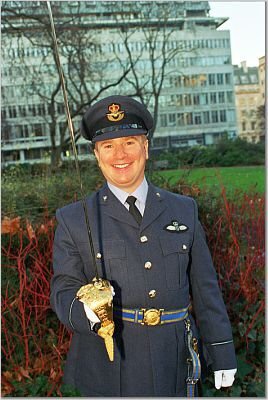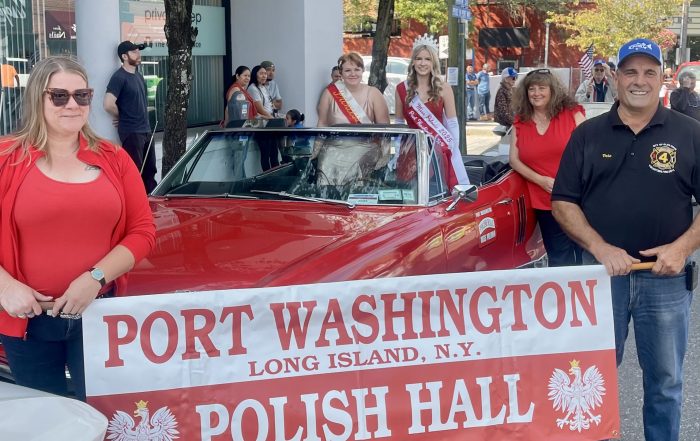Meet VFW Post 1819’s Webmaster
Taking to the Skies: My Years as a Pilot Instructor with the Royal Air Force
When many Americans think of military aviation, they picture jet fighters streaking across the sky or heavy transport aircraft hauling equipment across continents. But for thousands of young men and women in the United Kingdom, their first experience of military flying began in a much quieter cockpit—a propellor powered aircraft.
For many years, I served as a commissioned officer and pilot with No. 613 VGS, based at Royal Air Force (RAF) Halton in Buckinghamshire, England. My role was that of a pilot instructor, holding an A2 category rating—a qualification that authorized me not only to teach cadets to fly but also to train and assess other instructors.
What is a VGS?
VGS units are part of the Royal Air Force Air Cadets, a youth organization that introduces teenagers to aviation, leadership, and service. Their mission is to give cadets hands-on flying experience while instilling discipline, responsibility, and teamwork.
One important distinction is that VGS officers held the Queen’s Commission, just like regular Royal Air Force officers. This meant we served under the Crown’s authority and carried the same responsibilities of leadership, discipline, and accountability as our full-time counterparts. While much of our work was with cadets, we were not simply civilian volunteers — we were commissioned officers entrusted with training, safety, and the example we set for the young people under our care.
At 613 VGS, we operated Vigilant training aircraft—light planes with engines that could be shut down in flight to allow cadets to experience true soaring. These aircraft allowed young people not only to learn the fundamentals of flight but also to cover more ground and train in a variety of weather conditions.
How VGS Differs from the U.S. Civil Air Patrol
For American readers, the closest comparison to the Air Cadets is the Civil Air Patrol (CAP). Both organizations introduce young people to aviation and develop leadership skills, but there are some key differences:
-
Mission focus: CAP has a three-part mission—cadet programs, aerospace education, and emergency services (including search and rescue). In contrast, the RAF Air Cadets, and by extension VGS, focus primarily on youth training, flying experience, and developing future officers and aircrew.
-
Aircraft and flying opportunities: CAP cadets may fly in powered aircraft, gliders, and even participate in flight academies across the U.S., but access depends on funding and availability. At a VGS, flying is central to the cadet experience—every cadet has the opportunity to take the controls under the supervision of trained instructors.
-
Structure and staffing: CAP is a civilian auxiliary of the U.S. Air Force, run largely by adult volunteers. VGS officers, however, hold the Queen’s Commission and serve as part of the Royal Air Force, meaning they carry military rank and responsibilities.
-
Pathways to service: Both organizations provide pathways into military aviation, but in the U.K. the Air Cadets and VGS are more tightly integrated with RAF recruiting, meaning many cadets who train with us go on directly into Air Force service.
In short, CAP is broader in scope, with emergency response and community missions, while VGS is more specialized—focused intently on flying training and leadership development within a military environment.
My Role as an A2 Instructor
As an A2 instructor, I had two primary responsibilities:
-
Teaching cadets to fly. Many cadets came to us having never set foot in an aircraft before. Watching a young person progress from nervous first flights to confidently handling the controls was one of the most rewarding experiences of my career.
-
Training and mentoring instructors. Just as in any military aviation setting, quality control is essential. My rating enabled me to evaluate other instructors, ensure standards were upheld, and contribute to the development of safe, effective training programs.
This dual responsibility required not only flying skills but also leadership, patience, and the ability to assess performance under pressure.
Service and Impact
VGS units are staffed largely by reservists and volunteers—servicemen and women who dedicate countless hours to training the next generation. It was demanding work: early mornings, long days on the airfield, and constant vigilance over weather, safety, and the performance of both cadets and instructors.
But it was also deeply fulfilling. Many cadets who first flew with us went on to careers as pilots in the Royal Air Force, commercial airlines, or the aerospace industry. Others simply carried forward the confidence and discipline they learned through flying. Knowing I played a part in shaping those futures has been one of the greatest honors of my life.
A Shared Tradition
For American veterans, the parallels are easy to see. Just as U.S. service members mentor cadets in the Civil Air Patrol or ROTC programs, our work at 613 VGS was about more than just flying. It was about passing down values—duty, responsibility, and the pursuit of excellence—from one generation to the next.
While the aircraft were smaller and the setting quieter than a busy flight line, the mission was no less vital. It was about service, training, and preparing young people for whatever challenges lay ahead.
Author’s Note
I served as a commissioned officer and A2 pilot instructor with 613 VGS at RAF Halton, holding the Queen’s Commission. Today, I am proud to serve as the webmaster for VFW Post 1819. While my RAF service does not make me formally eligible for VFW membership, I am honored to support America’s veterans and to contribute to the mission and values of the organization.
recent posts
Emma Berestecki Crowned Miss Polonia 2025 – Celebrating Heritage, Leadership, and Service
We are proud to share the dedication and community spirit [...]
Meet VFW Post 1819’s Webmaster
Taking to the Skies: My Years as a Pilot Instructor [...]
news via inbox
Keep updated about our events and news!


